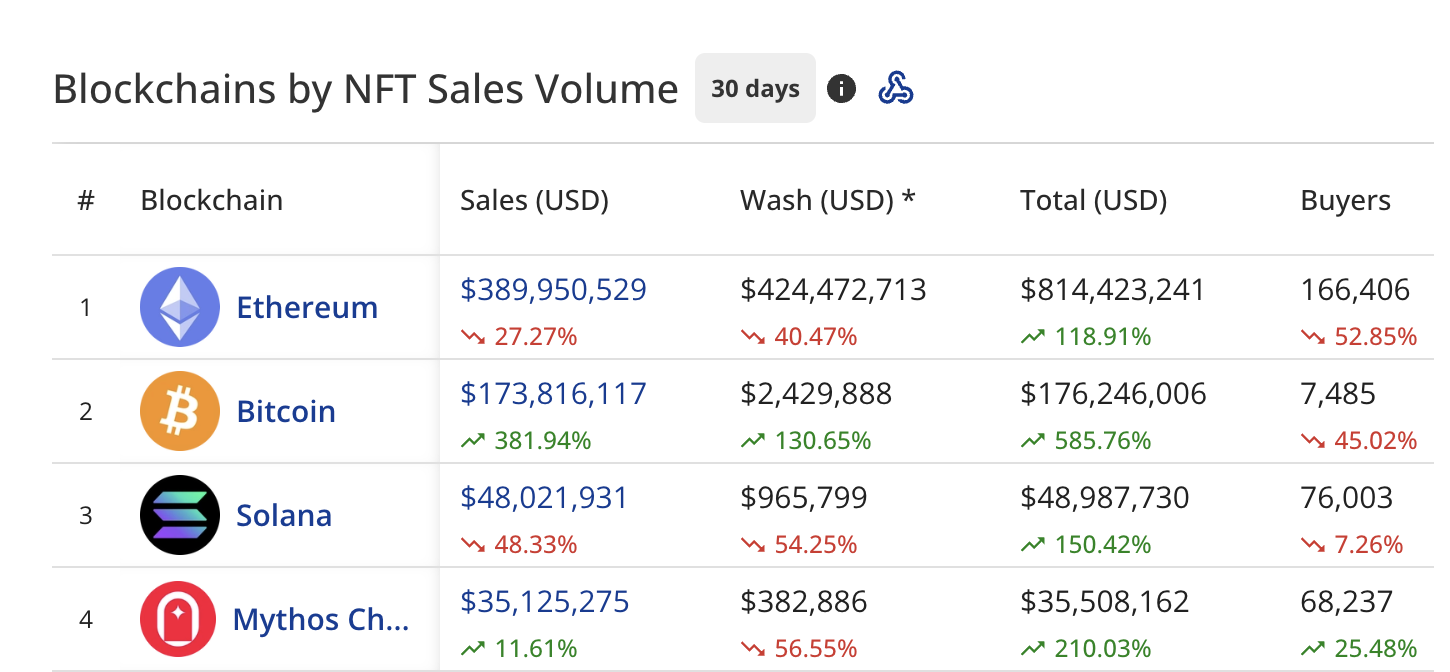This past weekend, two major cryptocurrency/non-fungible tokens events happened, Veecon Indianapolis 2023 and the BTC Miami/Ordinals Conference 2023.
I chose to go to Indianapolis to meet my colleagues whom I’ve worked with for almost three years without meeting them in real life.
At one point, as I was walking back to the hotel on the streets of Indianapolis, it became apparent to me that there was a split in the NFT community. One was the “status quo” ETH-based community that’s in the pre-teen stage meeting up at Veecon, and the other was a newly birthed baby in Miami at BTC Miami/Ordinals 2023.
At Forkast Labs, we work on CryptoSlam.io to “unite the NFT community.” Ever since our co-founder Randy Wasinger added Loom (Sorare), Flow and WAX chains, alongside Ethereum in early 2021, we have always strived to include all new and relevant chains that we can.
I also met loads of NFT industry celebs, including Richerd Chan from Manifold.xyz, who has created some of the most used Ethereum smart contracts in the NFT industry. He had actually reached out to me in 2020 through a client at the time and we had only talked online, but never met in person, and now he had so many folks around him that I could only briefly speak with him.
As an epic Ethereum NFT celebrity and developer, I decided to ask him a very telling question: “Are you developing for Bitcoin?”
His response made it clear that he wasn’t and had no intention of doing so at the moment. He posed a great question in return: “Is the BTC community even supporting Ordinals?”
It’s a great question, to be honest.
In Miami, it seems that the main theme revolves around the “laser-eyed maxis” who view Bitcoin as having a single use case: being “better money” and a store of value that shouldn’t be tampered with.
On the other hand, the new Ordinal crew, represented by individuals like @rodarmor, @TO, @LeonidasNFT and @udiwertheimer, are leading the charge on alternative use cases such as digital artifacts (NFTs) and BRC-20s, which are the bitcoin equivalent of fungible tokens like ETH and BTC.
The latest rankings on CryptoSlam.io show that $OXBT and $ORDI are in the top 10, indicating the rapid rise of Bitcoin in the scene.


Personally, I have never seen an ecosystem boot up this fast, except for NFTs in 2020-2021, and I would argue that it’s even moving faster this time around.
The Bitcoin market cap of over US$500 billion is more than double the Ethereum currency market cap of over US$200 billion. The Bitcoin protocol may be better suited to certain types of NFTs, ones that see immutability and scarcity as features instead of weaknesses.
Fundamentally, there is a big difference forming between what we are seeing on ETH and what we are seeing on BTC. The community is splitting into people who value UX, and corporate partners and one who values ultimate security/scarcity and immutability. While I think there are strengths to each, there IS a place for both.
Net new people are coming into the “NFT” ecosystem, even if they will only trade Ordinals on BTC or BRC-20s, and they are really small in numbers, they are net new people. What will happen when the Michael Saylors of the world see the value in Ordinal theory, and its burgeoning use cases on BTC?
Saylor talks about why Ordinals & Inscriptions are an important conversation, saying 👇
— trevor.btc @ NYC (@TO) May 21, 2023
"If I were to discourage application development, I would be destroying the Bitcoin mining network." pic.twitter.com/i2xAayWREz
The NFT ecosystem, while can be seen as splitting, is actually growing and innovating, and while Taylor Swift fans are not coming in en masse, the core set of people who see the future of this technology is more excited about the growth of this industry than ever before.





